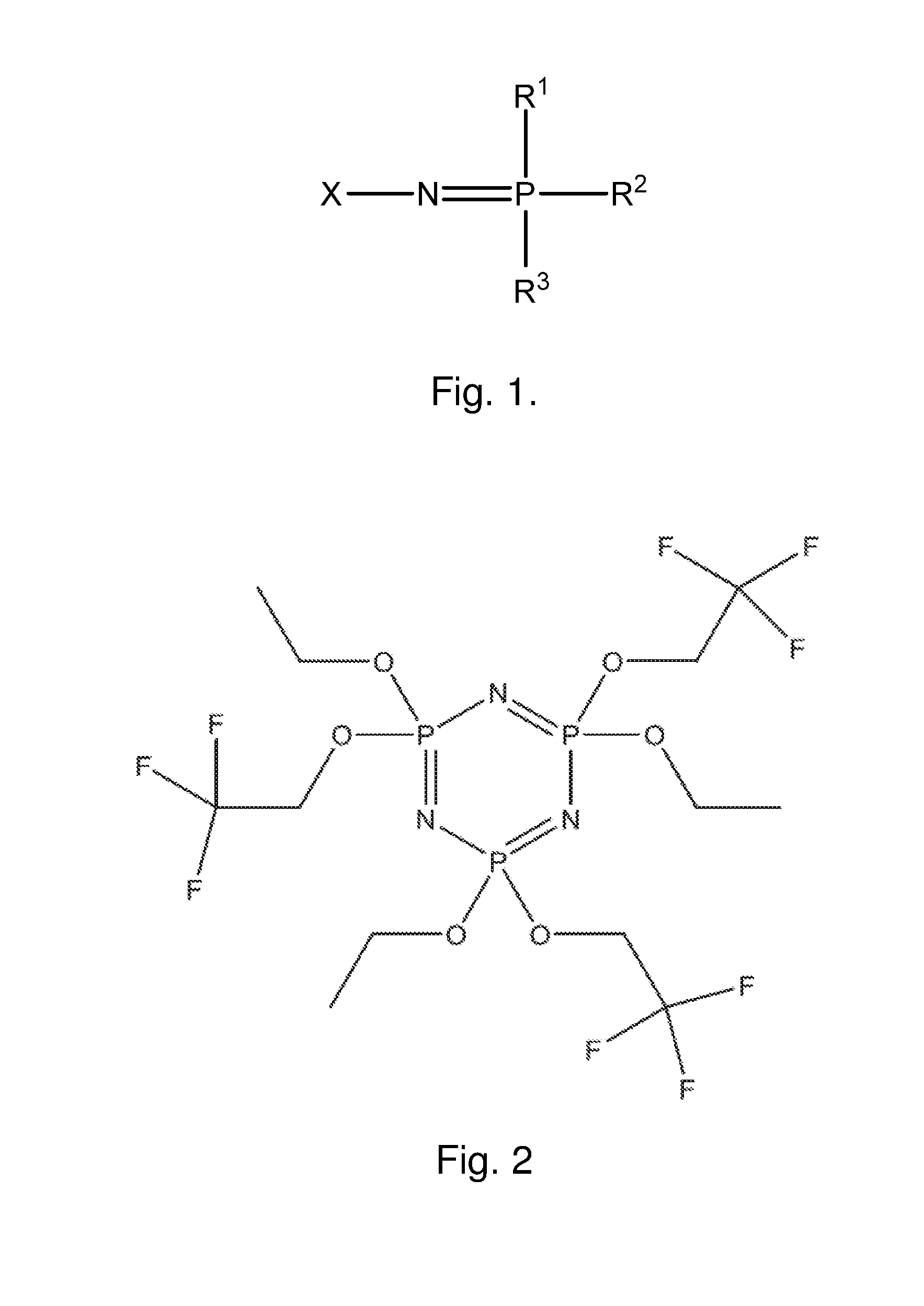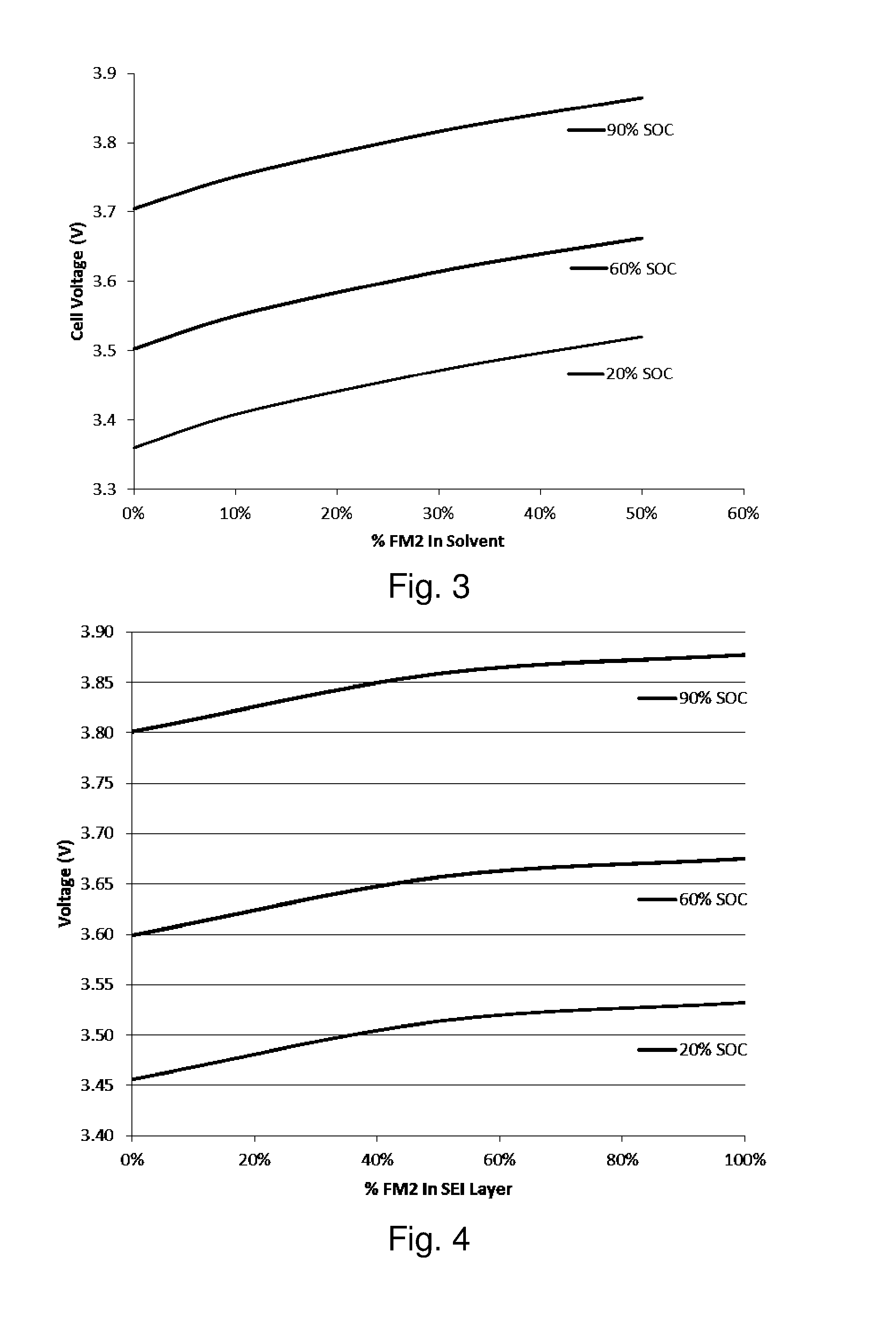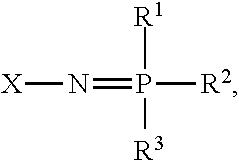All-inorganic solvents for electrolytes
- Summary
- Abstract
- Description
- Claims
- Application Information
AI Technical Summary
Benefits of technology
Problems solved by technology
Method used
Image
Examples
example
[0078]A model of a lithium-ion battery using the mixture of PA and Pz were developed based on existing data on the characterization and testing of PA and Pz components, specifically referred to as PA2 and FM2, respectively. Parameters for the model using an equivalent circuit model were determined from data regression of impedance testing of FM2 in electrolyte mixtures, and from physical property values for viscosity and conductivity for PA2 and FM2 determined through experiment. The model used physical property relationships to project the performance of a battery that used only a mixture of PA2 and FM2. This model estimates the hydrodynamic and electrochemical properties of the PA2 / FM2 electrolyte solvent and the battery performance using established property correlations for chemical mixtures. These relationships are based on standard trends for normal molecular interactions between compounds. Non-normal behavior can be exhibited in certain circumstances, but does not negate the ...
PUM
 Login to View More
Login to View More Abstract
Description
Claims
Application Information
 Login to View More
Login to View More - R&D
- Intellectual Property
- Life Sciences
- Materials
- Tech Scout
- Unparalleled Data Quality
- Higher Quality Content
- 60% Fewer Hallucinations
Browse by: Latest US Patents, China's latest patents, Technical Efficacy Thesaurus, Application Domain, Technology Topic, Popular Technical Reports.
© 2025 PatSnap. All rights reserved.Legal|Privacy policy|Modern Slavery Act Transparency Statement|Sitemap|About US| Contact US: help@patsnap.com



